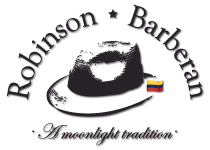At the beginning of century XIX arise the first straw hats in Europe, specifically in Italy, since it is said that in Venice this product was widely used by the gondoliers. Originally this hat was different in form, model, texture, fabric, given its elaboration process, since they were woven by special machines with a straw called Sennit.
Originally the natives of Ecuador created this delicate garment as part of their daily clothing. It had bigger and more pronounced dimensions and finishes, since its main use was to protect, mainly the head, of the adverse meteorological conditions of the tropic.
Its use spread to different parts of the world after the boom in its manufacture in the early twentieth century during the construction of the canal of Panama, where thousands and thousands of hats were brought from Ecuador, its native land, to protect the Workers and engineers of the high temperatures of the tropics and thus facilitate their arduous work.
From there he will later receive his most popular name (Panama Hat) although he will not forget his roots as a toquilla hat or Jipijapa. The first derived from the use of a hat type brought by the Spaniards during the conquest, and the second corresponding to the belief of its origin in the Ecuadorian city of the same name.
Some famous and essential figures in modern history, such as Napoleon, Edward VII, Winston Churchill, Humphrey Bogart, Frank Sinatra and Venezuelan President Rómulo Betancourt have enjoyed his company, among them the American ex-president Theodore Roosevelt who used it during his visit to The construction of the canal and who through a photograph, made him popular in the United States and Europe.
Such is its essential role in the Ecuadorian and Latin American cultural context, which Unesco declared its fabric as intangible cultural heritage of humanity on December 6, 2012.

